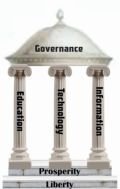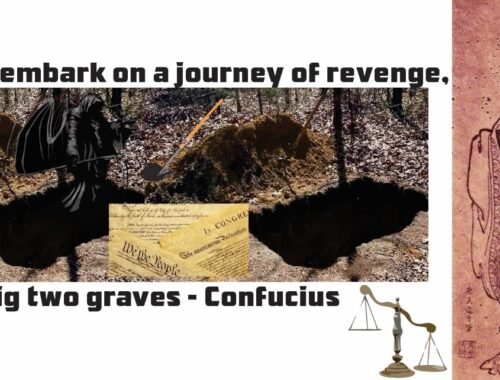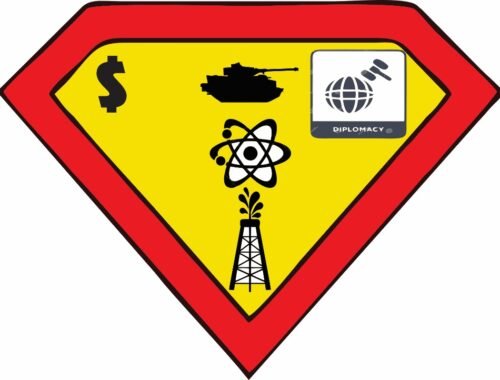
Can a Free Republic be a Superpower: Part 2b: Superpower or Sleeping Giant?
Potential Energy (source https://www.livescience.com/65548-potential-energy.html)
Japanese Admiral Yamamoto reportedly said, “I fear all we have done is to awaken a sleeping giant and fill him with a terrible resolve.” after WWII. The US quickly mobilized society and all elements of national power after the disaster and powered the Allied victory in WWII. It then powered a peace that contained the spread of communism and rebuilt Germany and Japan. There were two parts to this rise to superpower: having the required elements of national power and having the resolve and capability to employ them.
On the surface, it is a superpower. But can it effectively apply the elements of power? Can the US focus and effectively employ the elements of national power meet the definition cited in Part 1? Part 2a showed the US has the elements of national power. This part will focus on national will and the ability to execute.
If a state has the required elements of national, but not the will and ability to employ them, it has potential, but is not a superpower. It is like the balanced rock in the opening figure. As long as it remains fixed by friction, it is just potential energy.
| Source | Description | Impact |
| Weak leadership | Weak leaders shy away from risk and decisive action for fear they might fail and experience blowback. They may also have backers that dictate actions and policies to them. | Policies may flow not from national interests, but rather from puppet masters. The US may not take decisive action if the action undermines the puppet masters’ objectives. |
| Splintered society | In WWII, the US was a homogenous society and came together to fight a total war. Few dissented from the war and its prosecution. Today, the US society is heterogenous and bitterly divided. | Interest groups may push objectives and policies different from US vital interests and objectives. As we now with support or Hamas and the support for North Vietnam during the Vietnam War, these groups may protest US actions and support the opposition. |
| Fear of consequences | The prime example is nuclear weapons. Their use could trigger a larger and devastating use of nuclear weapons by other countries. During the Cold War, this because an odd source of strength through Mutually Assured Destruction. Potential US opponents may be less concerned about MAD now. | These expensive weapons have little operational use and even less tactical use. If the US avoids a strategic, existential war, they will fix other nation’s nuclear power. I could also prevent the US from going after bad actors financially for fear of retaliation or themselves becoming a target. |
| Checked by other powers | During the Cold War, there was only the US, and the Soviet Union Oher states were more supporting actors. Now, there are at least three significant actors with China and several regional powers that can significantly shape and alter the game. Add non-state actors, such as Hamas, Hezbollah, and other to the mix and the situation is even more complex. | Smaller players can disrupt large player actions using coalitions, international agencies, and social media. They can use social media to energize and empower special interest groups in their opponents’ countries. We see this now in spades with Hamas. |
| Technological change | The growth of AI and drones/nanotechnology could defeat or neutralize current elements of national power that required years and billions of dollars to develop. This change is potentially even more significant than the so-called Revolution in Military Affairs (RMA). Let us call AI/Drones RMA II. | We are now playing 3D chess, with Dungeons and Dragons thrown in for good measure. Potentially small investments can build disruptive capabilities that neutralize and potentially nullify large power capabilities. Think mass drones against an aircraft carrier. |
The horrific retreat from Afghanistan clearly illustrates these factors, as did the debacle in Vietnam. The common factor in both was that military power was largely successful. Failure flowed from the poor application and is, in some cases, deliberately withheld elements of power. The US has had difficulty focusing and coordinating the non-military aspects of power since then.
RMA II sets the stage for non-state and smaller regional players to limit the larger players’ actions. Couple this with the growth in other players and they have the capability and the capacity to tie up a potential superpower’s ability to execute in knots. Now, add in a splintered society with competing objectives and definitions of success and you have a recipe for a crippled power, let alone a superpower.
Research questions:
- Can a splintered and highly heterogenous society be a superpower?
- Can a strong central government, facilitated by corporatism, heal the differences in society and restore a strong common culture? If so, is it still a republic or does it become a fascist/corporatist state?
- Is the era of superpowers over?





